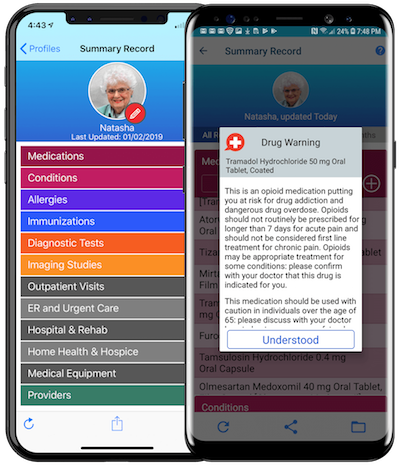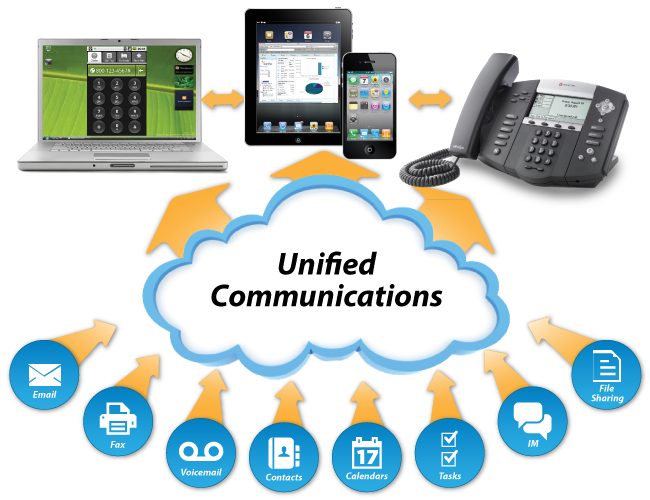 I’ve been writing fewer posts recently because the trajectory forward for healthcare and healthcare IT seems to be evolving very rapidly. In just the past week, we’ve had: the American Hospital Association letter suggesting that 21,000 pages of regulations be rolled back including Meaningful Use Stage Three concepts and quality measurement in many care settings, the passage of the 21st Century Cures bill and its many IT related mandates, and the nomination of Tom Price for HHS Secretary and Seema Verma for CMS administrator...
I’ve been writing fewer posts recently because the trajectory forward for healthcare and healthcare IT seems to be evolving very rapidly. In just the past week, we’ve had: the American Hospital Association letter suggesting that 21,000 pages of regulations be rolled back including Meaningful Use Stage Three concepts and quality measurement in many care settings, the passage of the 21st Century Cures bill and its many IT related mandates, and the nomination of Tom Price for HHS Secretary and Seema Verma for CMS administrator...
Seema Verma
See the following -
21st Century Cures and the Road Ahead
- Login to post comments
Blue Button Developers to Meet at the White House Today - Verma and Liddell to Open the Conference
 More than 700 app developers and eHealth groups and organizations have registed to meet today at the White House for the first Blue Button 2.0 developer conference. The "The inaugural Blue Button 2.0 Developer Conference will bring together application developers in the technical community to help build and develop new tools to help patients understand their health data,” said Seema Verma, Administrator of the Centers for Medicare and Medicaid Services (CMS) in a statement.
More than 700 app developers and eHealth groups and organizations have registed to meet today at the White House for the first Blue Button 2.0 developer conference. The "The inaugural Blue Button 2.0 Developer Conference will bring together application developers in the technical community to help build and develop new tools to help patients understand their health data,” said Seema Verma, Administrator of the Centers for Medicare and Medicaid Services (CMS) in a statement.
- The Future Is Open
- Login to post comments
CMS Goes Live with Blue Button - With Life and Cost Saving Applications for 53 Million Americans to Use
 On August 13 at the White House in Washington, D.C., the Office of American Innovation and the Center for Medicare and Medicaid Services (CMS) will host the first Blue Button 2.0 conference. This event will highlight CMS’ strong investment and leadership in Blue Button as a patient driven means for interoperability, cost-effective care and patient safety. Eight years after President Obama’s announcement of the Blue Button initiative to give Veterans, military beneficiaries and Medicare beneficiaries “easy access to their health information” with the use of a “Blue Button”, CMS Administrator Seema Verma took action with “Blue Button 2.0” so that 53 million Medicare beneficiaries can now make use of CMS approved patient facing Blue Button applications, turning a four-year history of claim data into actionable longitudinal health records to prevent costly medical errors, unnecessary redundant care or other harmful and wasteful care.
On August 13 at the White House in Washington, D.C., the Office of American Innovation and the Center for Medicare and Medicaid Services (CMS) will host the first Blue Button 2.0 conference. This event will highlight CMS’ strong investment and leadership in Blue Button as a patient driven means for interoperability, cost-effective care and patient safety. Eight years after President Obama’s announcement of the Blue Button initiative to give Veterans, military beneficiaries and Medicare beneficiaries “easy access to their health information” with the use of a “Blue Button”, CMS Administrator Seema Verma took action with “Blue Button 2.0” so that 53 million Medicare beneficiaries can now make use of CMS approved patient facing Blue Button applications, turning a four-year history of claim data into actionable longitudinal health records to prevent costly medical errors, unnecessary redundant care or other harmful and wasteful care.
- Login to post comments
CMS Launches Data Element Library To Support Interoperability
 Today, the Centers for Medicare & Medicaid Services (CMS) announced the agency’s first Data Element Library (DEL). The DEL is a new CMS database that supports the exchange of electronic health information. Using this free, centralized resource, the public for the first time can view the specific types of data that CMS requires post-acute care facilities (such as nursing homes and rehabilitation hospitals) to collect as part of the health assessment of their patients. These assessments include questions and response options (data elements) about patients, including demographics, medical problems and other types of health evaluations. Read More »
Today, the Centers for Medicare & Medicaid Services (CMS) announced the agency’s first Data Element Library (DEL). The DEL is a new CMS database that supports the exchange of electronic health information. Using this free, centralized resource, the public for the first time can view the specific types of data that CMS requires post-acute care facilities (such as nursing homes and rehabilitation hospitals) to collect as part of the health assessment of their patients. These assessments include questions and response options (data elements) about patients, including demographics, medical problems and other types of health evaluations. Read More »
- Login to post comments
CMS Promoting Interoperability Program: A Public Health Perspective
 Well, here we go again. The Centers for Medicare and Medicaid Services (CMS) has now released a new Notice of Proposed Rulemaking (NPRM), titled Medicare Program; Revisions to Payment Policies under the Physician Fee Schedule and Other Revisions to Part B for CY 2019; Medicare Shared Savings Program Requirements; Quality Payment Program; and Medicaid Promoting Interoperability Program...As this NPRM was released, the CMS Administrator, Seema Verma, published an open letter to doctors which is focused on reducing the burden on doctors so they can spend more time with physicians. HL7 has begun a similar initiative on reducing clinical burden. So the key question is: Does this NPRM go far enough to reduce provider burden in the spirit of Dr. Verma's letter?
Well, here we go again. The Centers for Medicare and Medicaid Services (CMS) has now released a new Notice of Proposed Rulemaking (NPRM), titled Medicare Program; Revisions to Payment Policies under the Physician Fee Schedule and Other Revisions to Part B for CY 2019; Medicare Shared Savings Program Requirements; Quality Payment Program; and Medicaid Promoting Interoperability Program...As this NPRM was released, the CMS Administrator, Seema Verma, published an open letter to doctors which is focused on reducing the burden on doctors so they can spend more time with physicians. HL7 has begun a similar initiative on reducing clinical burden. So the key question is: Does this NPRM go far enough to reduce provider burden in the spirit of Dr. Verma's letter?
- Login to post comments
HHS Releases Interoperability Rules
 The U.S. Department of Health and Human Services (HHS) today proposed new rules to support seamless and secure access, exchange, and use of electronic health information. The rules, issued by the Centers for Medicare & Medicaid Services (CMS) and the Office of the National Coordinator for Health Information Technology (ONC), would increase choice and competition while fostering innovation that promotes patient access to and control over their health information. The proposed ONC rule would require that patient electronic access to this electronic health information (EHI) be made available at no cost.
The U.S. Department of Health and Human Services (HHS) today proposed new rules to support seamless and secure access, exchange, and use of electronic health information. The rules, issued by the Centers for Medicare & Medicaid Services (CMS) and the Office of the National Coordinator for Health Information Technology (ONC), would increase choice and competition while fostering innovation that promotes patient access to and control over their health information. The proposed ONC rule would require that patient electronic access to this electronic health information (EHI) be made available at no cost.
- Login to post comments
HHS Seeks to Reorient Obamacare Innovation Center
Even as the Trump administration works to repeal the Affordable Care Act, it is taking advantage of one of the 2010 law's provisions to advance its own take on health system innovation. Seema Verma, administrator of the Centers for Medicare and Medicaid Services, on Sept. 20 announced plans to redirect the six-year-old Center for Medicare and Medicaid Innovation within the Health and Human Services Department. Its mission is to test new approaches or models to pay for and deliver high-quality health care more efficiently...
- Login to post comments
HIMSS18: Seema Verma - Making the patient the center of our health care system
 I’ve always been struck by how seldom the patient is mentioned in discussions around value-based care. Let me be clear, we will not achieve value-based care until we put the patient at the center of our healthcare system. Until patients can make their own decisions based on quality and value health care costs will continue to grow at an unsustainable rate. This administration is dedicated to putting patients first, to be empowered consumers of health care that have the information they need to be engaged and active decision-makers in their care. Through this empowerment, there will be a competitive advantage for providers that deliver coordinated, quality care, at the best value, to attract patients who are shopping for value.
I’ve always been struck by how seldom the patient is mentioned in discussions around value-based care. Let me be clear, we will not achieve value-based care until we put the patient at the center of our healthcare system. Until patients can make their own decisions based on quality and value health care costs will continue to grow at an unsustainable rate. This administration is dedicated to putting patients first, to be empowered consumers of health care that have the information they need to be engaged and active decision-makers in their care. Through this empowerment, there will be a competitive advantage for providers that deliver coordinated, quality care, at the best value, to attract patients who are shopping for value.
- Login to post comments
HIMSS19: Open Source Software for Disaster Preparedness and Response
 Although not officially listed as a track at the HIMSS19 conference, there are a series of very important presentations on the use of open source software for disaster preparedness and response. This is a critical topic that we have covered extensively in Open Health News. As we detailed in this article, there was a major failure in being able to provide victims of Hurricane Harvey, as well as Hurricane Irma and Hurricane Maria with access to their medical records. Few emergency medical responders could access their records either. The two success stories that came out of the hurricanes were two open source electronic health record (EHR) systems, OpenEMR and the VA's open source VistA EHR.
Although not officially listed as a track at the HIMSS19 conference, there are a series of very important presentations on the use of open source software for disaster preparedness and response. This is a critical topic that we have covered extensively in Open Health News. As we detailed in this article, there was a major failure in being able to provide victims of Hurricane Harvey, as well as Hurricane Irma and Hurricane Maria with access to their medical records. Few emergency medical responders could access their records either. The two success stories that came out of the hurricanes were two open source electronic health record (EHR) systems, OpenEMR and the VA's open source VistA EHR.
- The Future Is Open
- Login to post comments
Humetrix to Demo iBlueButton's Capabilities to Serve Veterans Leveraging the New VA Lighthouse Blue Button 2.0 API at CES in Capitol Hill
 At the Consumer Technology Association's (CTA) Tenth Annual CES on the Hill, Humetrix will demonstrate iBlueButton, its Center for Medicare and Medicaid Services (CMS) approved Blue Button 2.0 mobile health application, to give Americans covered by Medicare as well as Veterans and TRICARE enrollees the ability to securely access, store and share - under their direct and sole control - their health records. CES on the Hill will take place on Wednesday May 1st from 6:00 - 8:00 pm in the cafeteria of the Rayburn Office Building...iBlueButton transforms claim data in real time into an actionable longitudinal health record. Immediately available on the user's phone or tablet, iBlueButton provides up to date lists of medications (actually delivered by a pharmacy, and not simply prescribed), diagnoses, and prior tests and procedures for users to review and share with their physicians wherever they receive care...
At the Consumer Technology Association's (CTA) Tenth Annual CES on the Hill, Humetrix will demonstrate iBlueButton, its Center for Medicare and Medicaid Services (CMS) approved Blue Button 2.0 mobile health application, to give Americans covered by Medicare as well as Veterans and TRICARE enrollees the ability to securely access, store and share - under their direct and sole control - their health records. CES on the Hill will take place on Wednesday May 1st from 6:00 - 8:00 pm in the cafeteria of the Rayburn Office Building...iBlueButton transforms claim data in real time into an actionable longitudinal health record. Immediately available on the user's phone or tablet, iBlueButton provides up to date lists of medications (actually delivered by a pharmacy, and not simply prescribed), diagnoses, and prior tests and procedures for users to review and share with their physicians wherever they receive care...
- Login to post comments
Humetrix to Showcase Medicare Approved Blue Button 2.0 Mobile Platform at HIMSS19
 At HIMSS 19 February 11-15 in Orlando, Florida, Humetrix will demo its iBlueButton 8.0 mobile health platform approved by the Centers for Medicare and Medicaid Services (CMS) to help millions of Americans covered by Medicare, Veterans, and military personnel in TRICARE receive safer and more cost-effective healthcare. A year after announcing the Medicare Blue Button 2.0 and MyHealthEData initiative at the HIMSS 18 conference, CMS Administrator, Seema Verma continues to emphasize the importance of "giving patients the necessary information they need to make the best decisions about their health care". Humetrix...has embraced this initiative from the start recognizing first and foremost that because Medicare beneficiaries are most at risk for medical errors and redundant tests across multiple providers they need to have access and use of their medical history wherever they receive care.
At HIMSS 19 February 11-15 in Orlando, Florida, Humetrix will demo its iBlueButton 8.0 mobile health platform approved by the Centers for Medicare and Medicaid Services (CMS) to help millions of Americans covered by Medicare, Veterans, and military personnel in TRICARE receive safer and more cost-effective healthcare. A year after announcing the Medicare Blue Button 2.0 and MyHealthEData initiative at the HIMSS 18 conference, CMS Administrator, Seema Verma continues to emphasize the importance of "giving patients the necessary information they need to make the best decisions about their health care". Humetrix...has embraced this initiative from the start recognizing first and foremost that because Medicare beneficiaries are most at risk for medical errors and redundant tests across multiple providers they need to have access and use of their medical history wherever they receive care.
- Login to post comments
Is Cloud Faxing the Solution to the Health IT Usability and Interoperability Crisis?
 The Healthcare industry is in profound crisis as the HITECH Act of 2009 led medical facilities across the United States to spend in excess of $3 trillion on the purchase and implementation of expensive electronic health records (EHRs) under the Meaningful Use program. Yet, the most fundamental goals of electronic records Nirvana that were promised have not been achieved. For multiple reasons, EHRs have turned out to lack usability and be non-interoperable. In fact, most monopoly EHR vendors are engaged in what is commonly called “data blocking.” In most cases physicians are unable to obtain medical records for the patients they are seeing and patients have a hard time getting a hold of their own medical records. That means that the medical records are not available at the most important moment, the caregiver/patient encounter, and are not available to the patients themselves and their family members.
The Healthcare industry is in profound crisis as the HITECH Act of 2009 led medical facilities across the United States to spend in excess of $3 trillion on the purchase and implementation of expensive electronic health records (EHRs) under the Meaningful Use program. Yet, the most fundamental goals of electronic records Nirvana that were promised have not been achieved. For multiple reasons, EHRs have turned out to lack usability and be non-interoperable. In fact, most monopoly EHR vendors are engaged in what is commonly called “data blocking.” In most cases physicians are unable to obtain medical records for the patients they are seeing and patients have a hard time getting a hold of their own medical records. That means that the medical records are not available at the most important moment, the caregiver/patient encounter, and are not available to the patients themselves and their family members.
- The Future Is Open
- Login to post comments
Medicity's CEO's Thoughts on Interoperability
 Last week I had the esteemed privilege of attending the EHR Interoperability Meeting at the White House with Seema Verma, CMS Administrator, and Don Rucker MD, National Coordinator at ONC. The attendees represented payer organizations, and the discussion was focused on the barriers to interoperability and how we can band together to overcome them. Below are my responses to the major questions asked of each payer. As you read through this information, I hope it further clarifies our position on these topics.
Last week I had the esteemed privilege of attending the EHR Interoperability Meeting at the White House with Seema Verma, CMS Administrator, and Don Rucker MD, National Coordinator at ONC. The attendees represented payer organizations, and the discussion was focused on the barriers to interoperability and how we can band together to overcome them. Below are my responses to the major questions asked of each payer. As you read through this information, I hope it further clarifies our position on these topics.
- Login to post comments
Preliminary Thoughts on CMS Proposed MIPS IP Rule Changes: A Public Health Perspective
 Well, here we go again. The Centers for Medicare and Medicaid Services (CMS) has now released a new Notice of Proposed Rulemaking (NPRM)...The purpose of this NPRM is to address proposed changes for Year 3 of the Merit-based Incentive Payment System (MIPS), the provider (as opposed to hospital) side of the Quality Payment Program. The part that is most relevant to public health is the Medicaid Promoting Interoperability (IP) Program for Eligible Professionals (EP)” (the EHR Incentive Programs have been renamed). A major goal of this NPRM is to synchronize as much as possible the EP program with the hospital-based program that was addressed in a previous NPRM just a few months ago.
Well, here we go again. The Centers for Medicare and Medicaid Services (CMS) has now released a new Notice of Proposed Rulemaking (NPRM)...The purpose of this NPRM is to address proposed changes for Year 3 of the Merit-based Incentive Payment System (MIPS), the provider (as opposed to hospital) side of the Quality Payment Program. The part that is most relevant to public health is the Medicaid Promoting Interoperability (IP) Program for Eligible Professionals (EP)” (the EHR Incentive Programs have been renamed). A major goal of this NPRM is to synchronize as much as possible the EP program with the hospital-based program that was addressed in a previous NPRM just a few months ago.
- Login to post comments
Rush Medical Center Demoes Patient-Centered Blue Button 2.0 Mobile App at White House Event
 Information technology has changed the world, and now it’s changing health care in dramatic and fast-moving ways. Rush is a nationally-recognized leader in using IT to achieve better outcomes, lower costs and improve the patient experience. This leadership reached the White House on Monday, when...Rab and Boutrs presented MyRush Mobile, an app for mobile phones developed by Rush’s information systems department, to representatives of the Centers for Medicare and Medicaid Services, including CMS director Seema Verma. The presentation was part of the Blue Button 2.0 Conference, a gathering of software developers held in the White House South Court Auditorium.
Information technology has changed the world, and now it’s changing health care in dramatic and fast-moving ways. Rush is a nationally-recognized leader in using IT to achieve better outcomes, lower costs and improve the patient experience. This leadership reached the White House on Monday, when...Rab and Boutrs presented MyRush Mobile, an app for mobile phones developed by Rush’s information systems department, to representatives of the Centers for Medicare and Medicaid Services, including CMS director Seema Verma. The presentation was part of the Blue Button 2.0 Conference, a gathering of software developers held in the White House South Court Auditorium.
- Login to post comments